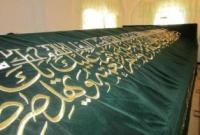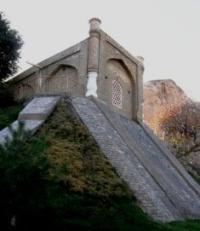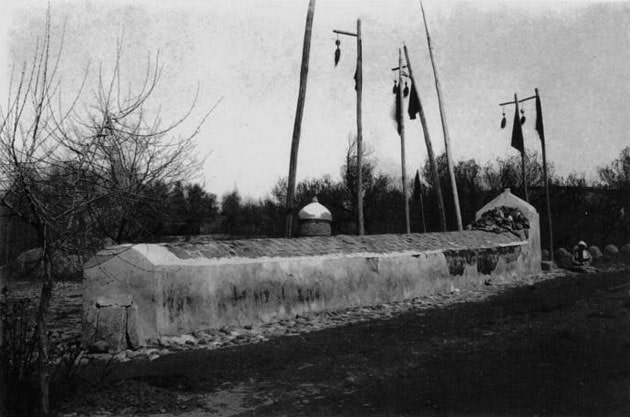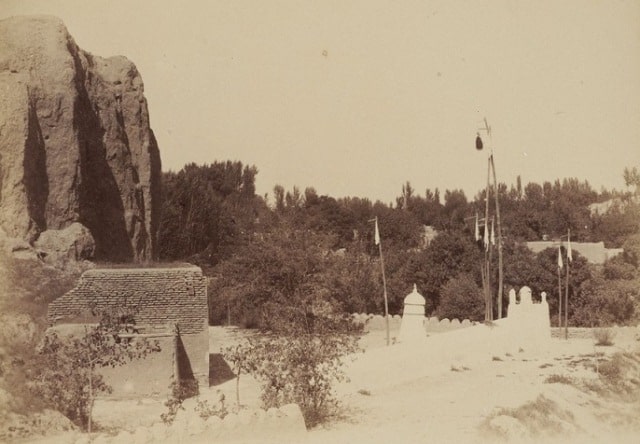You are here
Khodja Daniyar mausoleum.


Religious monuments in Uzbekistan.
“That was the day the ancient songs of blood and war spilled from a hole in the sky
And there was a long moment as we listened and fell silent in our grief and then one by one, we stood tall and came together and began to sing of life and love and all that is good and true
And I will never forget that day when the ancient songs died because there was no one in the world to sing them”
Brian Andreas.
Excursion tours to Khodja Daniyar mausoleum.
On Afrasiab, beside the mosque of Hazret-Hyzr there are two other holy places: memorial complex of Kusam ibn Abbas and mausoleum of Khodja Daniyar. Samarkand legends say that the relative of the Prophet, Kusam ibn Abbas and his companion Khodja Daniyar were the first Islamic preachers in Samarkand.
Mazar of Khodja-Daniyar is located on the northern slope of Afrasiab hill, at the Siab’s bluff beside the curative source. This is the place at the ancient wall of Samarkand. Probably, Khodja-Daniyar was one of esteemed Islamic clerics, participating in Arab military campaigns. In this case, the place of his tomb was connected with a battle nearby the city wall.
According to the other legends, Khodja-Daniyar represents the Koranic personage - prophet Daniyar (Daniel) and in this context, the place is recognized sacred by three religions: Islam, Christianity and Judaism.
Since we know about the tomb of prophet Daniyar in Mosul, another version says that his remains were brought here by Amir Temur for rising of spiritual significance of Samarkand after the conquest of Iran.
A peculiar feature of Khodja-Daniyar cult in Samarkand is that the saint has life-giving energy and continues to grow in the tomb. In this connection, his tomb was periodically extended.
It is worthy to be noted that the property of "eternal life” allies Khodja-Daniyar with the persons of neighbouring holy places - Kusam ibn Abbas and Hazret-Hyzr. Kusam was declared as Shahi-Zinda - alive tsar, Hazret-Hyzr - is immortal thanks to water of life, and Khodja Daniyar is capable to grow in the tomb.
Quite possible that we deal with the traces of ancient ideas of the Samarkand people about eternal forces of the nature, which penetrated into Islamic cult and found reflection in ornaments on early Islamic architecture and ceramics.
The photos of the XIX century expose the gravestone of Khodja Daniyar in a form of long sagana, beside which there are sacred symbols – numerous poles with horsetails. The dome mausoleum above the long gravestone was built just at the beginning of the XX century.


Authority:
Alexey Arapov. Samarkand. Masterpieces of Central Asia. Tashkent, Sanat. 2004
Photos
Alexander Petrov.







